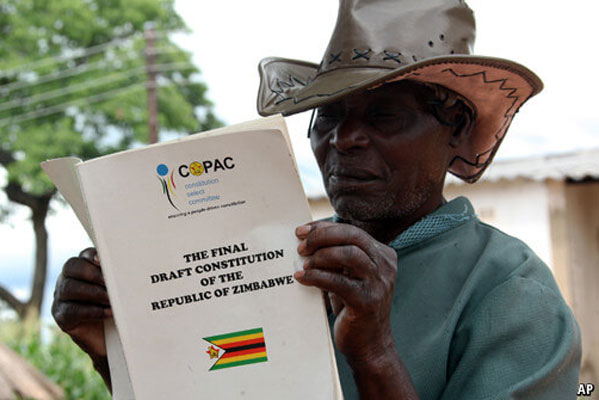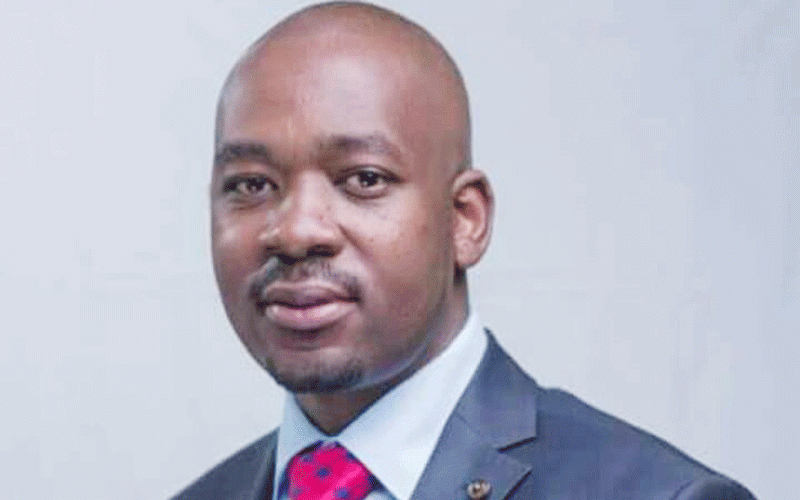
CONTINUED FROM LAST WEEK
The Constitution of Zimbabwe Amendment (No 2) Bill does not directly address existing laws and practices that limit the participation of youths and young persons in political life. The proposed youth quota is not enough: it should be representative in nature, considering that youth make up the overwhelming majority of the population. Any youth quota system should not be dominated by party politics and must ensure inclusivity to cater for marginalised groups of young people such as young women and youth living with disabilities.
There is need for 50-50 representation of youth in all public office/leadership positions from the grassroots going upwards, for instance, starting at village, ward, council to national level.
2.6 The amendment and devolution;
Chapter 14 of the 2013 Constitution deals with devolution of governmental powers and responsibilities. In terms of Section 264, some of the objectives of the devolution of include giving powers of local governance to the people and enhance their participation in the exercise of the powers of the State and in making decisions affecting them and promoting democratic, effective, transparent, accountable and coherent government in Zimbabwe as a whole. The Amendment is proposing restructuring of provincial councils. As a new creature of the 2013 Constitution, young women and men must also play a direct role in provincial level governance. The Amendment proposes a deletion of the structure for provincial councils, to be replaced by a new structure consisting of chairperson of the council, the mayors and chairpersons of all urban and rural local authorities in the province concerned and ten persons elected by a system of proportional representation. As is the case with the women’s and youth quota in the National Assembly, political parties will determine membership of the provincial councils. There are no measures or additional measures to insist on youth representation in provincial councils.
2.7 Appointment of up to seven additional ministers from outside Parliament
Despite being a very important element of the governance and decision-making matrix in Zimbabwe, very few people aged 35 and below have been appointed to Cabinet in the recent past. Any increase in the number of non-MP ministers who can be appointed from outside Parliament with no measures put in place to increase meaningful youth participation and representation at Cabinet level is a serious cause for concern. The desired increase in number from five to seven does not need alignment of the constitution to be effected.
2.8 De-coupling ZEC delimitation function from population census
- Chamisa under fire over US$120K donation
- Mavhunga puts DeMbare into Chibuku quarterfinals
- Pension funds bet on Cabora Bassa oilfields
- Councils defy govt fire tender directive
Keep Reading
There is no need to de-link the marking of electoral boundaries from the population census. In a country with a majority population which is relatively young, the majority of people in a constituency may not even be eligible to vote. Further, an MP represents more than the total number of registered voters or the people who voted for him/her in a constituency. Instead, government should consider pushing forward the national census so that the cycle for the census does not clash with election dates. Pushing forward census dates can be done with normal legislation unlike de-linking delimitation function from the population census which requires a constitutional amendment.
Legislative alternatives to constitutional amendments
There are various legislative options alternative to constitutional amendments aimed at implementing the youth and women’s quota. It must be admitted however that in designing these non-constitutional interventions and strategies, there is a need to understand that young people are not a homogenous group; other social aspects such as gender, rural/urban dwelling, ethnicity, and language need to be taken into consideration. The following are alternatives to constitutional reforms aimed at achieving real and not token youth representation, participation and empowerment:
3.1. Legal candidate quotas
Under this option, political parties are obligated to fill all their candidate lists with a minimum number of young people. This must be reflected or provided for in the Electoral Law, with necessary punishments or compelling measures. It is admitted that the impact of this may vary depending on the position in which young people are placed on political party lists and the type of electoral system used. It must be observed that for this to work, the young people must not be placed at the lower rungs of the list; they must be placed at key strategic positions so that their election is a real and practical possibility. Political parties must be urged by the law, through various measures to design internal party systems that ensure that the young persons make it on the ballot. Of course, the criticism for this approach is that it does not divorce youth participation and empowerment from party politics. Thus, whilst this approach enables the designing a system to promote the entry of youth and young people in state legislatures, additional mechanisms must be considered to ensure that those who succeed in entering the political space effectively represents the youth and youth issues, and not their erstwhile party leaders.
3.2. Voluntary quotas for youth
In terms of this option, political parties are encouraged to embed voluntary quotas for youth in their internal party regulations and place young candidates in electable positions. This could be coupled with incentives through the public funding of parties with a minimum threshold of youth representative. A system based on incentivising political parties to push for youths in their party list may work in the short term, especially where the incentives are spelt out in relevant electoral laws. A good example is a proposal to amend the law on public funding of political parties such that parties with more youth members of Parliament obtain more monetary allocation. At present, such precondition does not exist in the Political Parties (Finance) Act Chapter 2:11.
3.3. Youth participation in local council elections
There is need to amend the electoral laws so that it entrenches youth participation in local council elections. Local council elections are key; they can be the training ground for youth before they rise to higher national office. It is easier to institute youth quotas for local elections by amending the Electoral Act, the Rural District Councils Act and the Urban Councils Act.
3.4 Adopt strategies to raise awareness on importance of youth participation In politics
In Zimbabwe, political parties exploit their youth organs and branches for selfish interest not related to youth issues. The youth have lacked voice, and have continually failed to appreciate the real issues affecting their sector. In most occasions, the youth are a mouthpiece for party policies that relegate youth issues. The government and political parties have not succeeded in raising awareness for youth on their issues. Government should adopt strategies to raise awareness about the importance of youth participation in politics before thinking of a ticket to parliamentary office. These strategies can include expressions of support from parliamentary leaders for more youth voices in politics, as well as institutional changes enabling youth to exert greater influence on candidate selection.
Call to action
As young people ,we are calling upon our national leaders, parliamentarians and duty bearers in various positions of influence to join us in the quest for generation equality and meaningful civic participation of young people as espoused by Section 20 of the Constitution of Zimbabwe. Youth representation must straddle state bodies, agencies institutions and other public bodies.
Without youth presence in governance frameworks, youth issues will be ignored, or given marginal importance. Accordingly, national governance frameworks must be revisited so that they mainstream youth participation and representation. The current constitutional amendment will not be able to achieve this — legislative reform is needed for this to work. The current youth legislation is outdated- its principles and mechanisms do not guarantee enhanced participation. A lot need to be done to progressively realise the rights and freedoms of the youth in relation to real democratic participation. Youth groups and young persons need real empowerment as opposed to tokenism and the politics of hand-outs.











